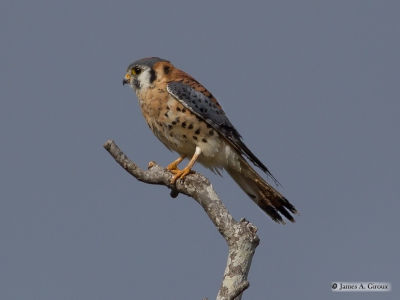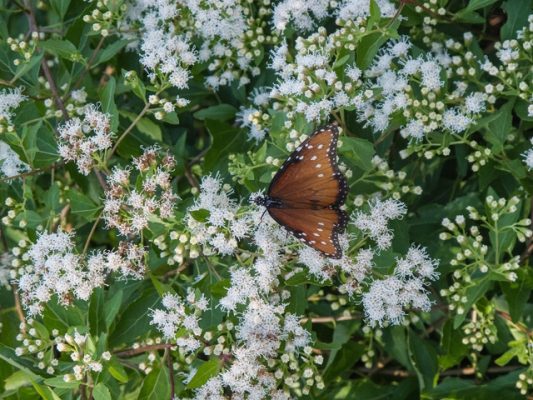Where Have All The Birds Gone? Lure Them Back with Native Plants
October can be a slow month for bird watchers. Many of our summering birds have flown south for the winter, and those in transit are not calling attention to themselves. The birds that will winter here are beginning to arrive, dependent on favorable winds. Resident birds like Northern Cardinals and Lesser Goldfinches seem to abandon our feeders since there is plenty of natural food available in the wild, like seeds, insects, spiders and berries. In fact, since most birds don’t come to feeders at all, it makes sense to provide the natural, sustainable foods they prefer. Choosing native plants, those that have evolved over generations, and that were here long before Columbus, will provide sustenance timed for our birds’ needs as they migrate through, or get ready for winter. The Lady Bird Johnson Wildflower Center has its semi-annual native plant sale the weekend of October 20 and 21. It may seem counter-intuitive if you are not from Texas, but fall is a great time to plant perennials, shrubs and trees so they can establish their root systems over the cool winter months. Black-thumb gardener plant choices include White Mistflower (also known as Shrubby Boneset), an arching shrub with white flowers in the fall. It is a butterfly magnet, and goldfinches like to eat the leaves. It blooms best in full sun, is drought tolerant, and can be grown in a pot. In natural areas it occurs along woodland edges. Another easy to grow native is the Yaupon, a small evergreen tree with bright red berries. It will keep your mockingbirds busy fending off other berry lovers like robins this winter.

Scissor-tailed Flycatcher – Jane Tillman
Departing Scissor-tailed Flycatchers
If you live next to open fields or on the outskirts of town, you may see several long-tailed slender birds perched on wires, with their heads pointing into the prevailing winds. These white or pale gray-headed, dark-winged birds with a salmon blush on their bellies are beginning to gather into flocks for their journey to Mexico and Central America. Males have the longest tails, and juveniles the shortest. Scissor-tails typically sally out from perches to catch grasshoppers and other insects, swallowing small bugs on the way back to the perch, but whacking large ones against the perch to subdue them before eating. When they chase insects their tails open to give them more maneuverability. Scissor-tailed Flycatchers are breeding birds of Texas, Oklahoma, and Kansas as well as western Louisiana, Arkansas and Missouri. Watch for them now, and again next April.

Male American Kestrel – James Giroux
Arriving American Kestrels
At nine inches, the kestrel is our smallest North American falcon. It is also one of the most numerous and widespread raptors. In the past, kestrels typically were only winter residents in Austin, but recently there have been a few breeding attempts, notably at 45th and Guadalupe. Kestrels are cavity nesters and the openings on high transmission towers appear to be attractive. In any event, kestrels that summered in Canada and Alaska will soon migrate south, with most wintering in the lower 48. Some will continue to Central America. Look for them in areas with few trees such as pastures and open parkland where they perch on wires. They bob their tails often, perhaps to maintain balance. Kestrels primarily subsist on insects, but they also take small songbirds and voles. The female has an all rufous back and wings, while the male has a rufous back and blue-gray wings. The head is rounded and is strongly marked with vertical bars on the cheeks. You might hear them defending their winter territories with a loud “klee klee klee” or “killy killy killy” call.

White Mistflower – Stephanie Brundage, Lady Bird Johnson Wildflower Center


